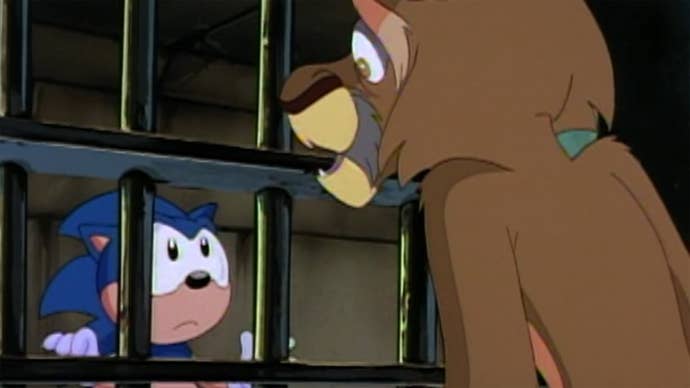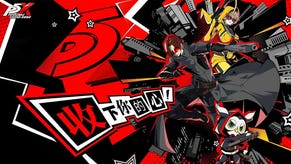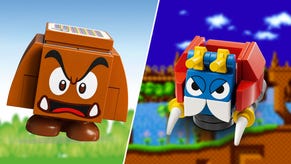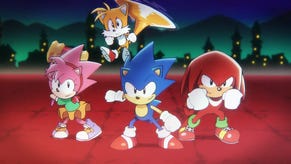On Saturday Mornings, Sonic the Hedgehog Turned Platforming into Pathos
DiC's most dignified take on the video game cartoon won't be praised by animation historians anytime soon, but it still marks an important turning point for Sega's mascot.
This article first appeared on USgamer, a partner publication of VG247. Some content, such as this article, has been migrated to VG247 for posterity after USgamer's closure - but it has not been edited or further vetted by the VG247 team.
The white-hot flame of the 16-bit console wars never burned much brighter than it did in 1993, that golden year following the debut of Sonic the Hedgehog 2.
Sega's America-friendly baditude and aggressive marketing campaigns gave the company a short-lived victory, one that wouldn't last after the combined forces of poorly received hardware expansions and the phenomenal success of Donkey Kong Country sunk the company's chances of winning the war. While Sega had this brief advantage, they took their battle against Nintendo to an unexpected frontier: Cartoons. Since 1989, kids had regularly plopped themselves down in front of their TVs to absorb Nintendo's brand through a form of entertainment just as welcome as video games, and, as history has shown us, quality rarely surfaced as a concern.
American animation powerhouse DiC's quartet of Nintendo cartoons (The Super Mario Bros. Super Show, Captain N: The Game Master, The Adventures of Super Mario Bros. 3, and Super Mario World) offered bargain-basement production values, familiar characters, and little else to a young audience obsessed with video games. That hardly mattered, though, and most kids didn't bat an eye at seeing their favorite side-scrolling hero transformed into a dumpy former wrestler who ended every episode with a cruel mockery of dancing while a tool belt repeatedly crushed his pelvis. And, if you can believe it, those live-action scenes with Lou Albano and a Canadian character actor running around a community theater set in Mario and Luigi costumes typically comprised the most entertaining segments of Super Show.

With Nintendo dominating the airwaves for almost half a decade, Sega needed to hit hard and fast to make up for lost time. And they did precisely that in 1993, when two Sonic cartoons — one syndicated and one running Saturday mornings on ABC — debuted on TV just a few weeks apart from one another. Strangely enough, both series placed TV's Jaleel White in the role of Sonic, in the hopes that the sheer popularity of Steve Urkel — the bizarro-Fonz of the '90s — would outweigh the Family Matters character's obnoxious reputation. Outside of its Wheel of Morality-esque "Sonic Says" segments, The Adventures of Sonic the Hedgehog has mostly been forgotten, though it's no major loss; its attempts to simulate classic Looney Tunes with a dash of Ren and Stimpy (with DiC going so far as to hire R&S director Kent Butterworth to oversee the series) were done in by the lack of quality control that typically plagued 65-episode syndicated series. The zippy, timing-reliant slapstick Adventures relied on never stood a chance against the animation sweatshops DiC regularly used to pump out their nearly endless supply of televised content.
On ABC, the cleverly named Sonic the Hedgehog took a far different approach, one that would define the character outside of his vague construction presented in the games. Sonic premiered at a revolutionary time for TV animation, when Disney's focus on quality sparked a movement that raised the standard for children's entertainment — though, to be fair, the '90s were business as usual for DiC. Still, 1992's Batman: The Animated Series — which brought an astounding level of maturity and professionalism to a medium largely regarded as trash — must have turned some heads at DiC, as Sonic the Hedgehog borrowed liberally from Batman's bag of tricks, even if the writers weren't prepared for such a task. In stark contrast to the games that inspired it, Sonic the Hedgehog is ugly, bleak, and dire, and presents its characters with a situation where suicide could be a convincing option. Sonic's Saturday Morning interpretation paints a world where Dr. Robotonik has already won, leaving the world nearly uninhabitable, with just a handful of fuzzy creatures left to its name.
And it's not just the setting that's dressed up in these dire trappings; other elements of the games also receive this same sort of makeover. Sonic isn't just a blue thing running left to right, he's a Freedom Fighter — back when that term had fewer political implications — with a band of rogues who seek to bring down a totalitarian force with sabotage and subterfuge. Robotnik doesn't just encase animals inside robots; instead, living creatures are "roboticized," similar to Star Trek's Borg. The first episode even features an off-screen death, as Cat, the oldest Freedom Fighter, is captured by Robotnik, threatened with torture, and eventually removed from his prison cell to suffer a terrible fate. In an era where shows had to tie everything up neatly in 22 minutes, Sonic offered an underlying problem that couldn't be solved through three acts of plucky, good-natured fun.

Of course, given Sonic's status as a DiC production, the show never quite lives up to its premise. Some of these issues can't be blamed entirely on DiC, though: The idea of continuity in Saturday morning cartoons was essentially unthinkable at the time, so Sonic and his friends rarely made measurable progress in their conflict against Robotnik. The majority of what makes Sonic unwatchable these days, though, can probably be chalked up to writers who, after suffering in the Saturday morning trenches for years (creator Len Jansen previously worked on the worst Filmation and Hanna-Barbera productions known to humankind), simply resorted to their old habits.
The absolute worst addition to Sonic comes in the form of Antoine, a character who ranks up there with Jabberjaw in the category of "How is this even a thing?" Despite the fact that Sonic takes place in the future of another planet, Antoine is somehow very, very French, and the series takes every opportunity to underline this fact repeatedly. If you told me disgruntled World War II vets wrote the entirety of Sonic the Hedgehog's 26 episodes, I wouldn't be shocked—Antoine encapsulates every ugly stereotype about the French, to the point where they really should have committed and just made him a frog. He's intended to act as the comic relief, but in most scenes, his vain/cowardly/petulant/jealous attitude only serves as a cheap plot complication, to the point where you start to wonder why Sonic and friends haven't sent him wandering into Robotnik's base on a very special mission that involves high-powered explosives being strapped to his chest. I'm guessing he must make really good crepes or something.
Ultimately, Sonic the Hedgehog doesn't hold up to scrutiny 20 years later, and its flaws are much larger than Antoine — though he does symbolize how uncomfortable the series could be with straying too far from the expected. While some cartoons are easy to slip back into, even when removed from the context of your childhood, Sonic comes off as far less mature than it initially seemed. Though it remains memorable for providing its rapt audience a 30-minute break from the surrounding inanity — even if the show could be a little inane itself. 20 years later, and Sonic still lives on, if only in spirit: The series' characters persist in the Archie-published comic, which hasn't showed any signs of slowing down after two decades of extrapolating thousands of pages of plot from a 16-bit platformer. Like Alvin and the Chipmunks and Teenage Mutant Ninja Turtles, Sonic will continue to be refurbished and reinvented for the sake of a new and changing audience, but it's unlikely we'll see a series as relatively dark as Sonic the Hedgehog again. And if we do, I can only pray that it doesn't inexplicably rage against the French.

.jpg?width=291&height=164&fit=crop&quality=80&format=jpg&auto=webp)






